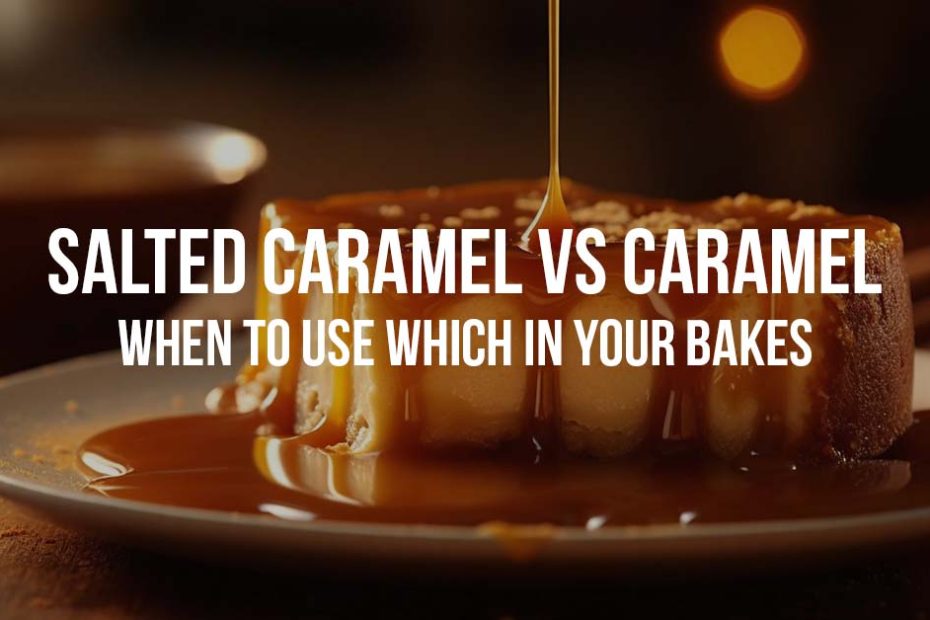Caramel has been one of those classic things to use in baking for a very long time, it’s shiny, deep and very easily liked by the taste buds. However, in the last few years, the strong desired , salted caramel has been dominating dessert menus, boutique bakeries, and cafés. They may be similar in appearance but can be quite opposite in terms of their contributions to flavor and the preparation of the recipe.
Students undertaking professional bakery courses in Chennai should be aware of knowing how to use each flavor by using different technique, pairing to achieve the desired end product.
What Exactly Is Caramel?
Caramel started out with one of the most basic ingredients. Sugar that is cooked to the perfect temperature changes its form to a golden brown liquid which has complex flavor notes of various kinds. A little butter and cream will bring you the luscious caramel sauce that you can use in unlimited ways.
Caramel is the basis of a baker’s pantry, its sugary flavor is very compatible with different used ingredients and still it is barely noticeable. It is the source of sweetness, glow and texture to desserts that require becoming warm and sweet.
Common uses include:
- Custards and puddings: Caramel not only sweetens such treats as crème caramel and pudding but also provides a subtle contrast which ‘lights up’ the dessert with its silky texture.
- Cakes and frostings: The caramel allows your layered cakes to have that elegant, buttery-sweetness you were probably looking for.
- Confections: Caramel is one of the main ingredients that the toffees, brittles and pralines use for their structure and aroma.
Basically, caramel is the flavor of delightful memories, it’s the taste of nostalgia, the perfect flavor for desserts which are more towards the smooth, classic sweet side.
What Makes Salted Caramel Different?
Caramel with a pinch of salt also has the same base ingredients, but the salt is added during or after cooking to make a small change in the flavor. One might say that this one tiny feature is almost like a whole new flavor world opening up.
Salt is a natural flavor enhancer. It does not only mellow the sweet side of caramel but also accentuate its nutty, slightly bitterish undertones. The outcome is a sauce that appears more luxurious, balanced and more fascinating to the taste buds.
You can usually spot salted caramel in:
- Cheesecakes and tarts: It reflects rich, creamy textures of these desserts.
- Brownies, cupcakes and cookies: The addition of salted caramel is done in order to neutralize the chocolate or sugar-heavy batters.
- Ice creams and desserts-in-a-jar: The combination keeps the consumers’ interest and makes them come back for more.
The sweet-salty pairing also is attractive to contemporary taste preferences, people want desserts that are decadent but not overly sweet and salted caramel is just the right fit for that.
The Science of Flavor Balance
The reason there is always chemistry behind every amazing caramel sauce is that caramelization occurs at temperatures between 160°C and 180°C, when sugar molecules degrade and give rise to hundreds of new compounds responsible for color and aroma. What happens if you also put a little salt in the mixture? The way the brain would be able to receive those flavors would change.
Salt provides more taste receptors for the tongue to become active, which makes the sweetness intensify but also that there is some contrast. This interaction is what the chefs refer to as flavor depth. This is the reason that a spoonful of salted caramel to the melting ice cream is more delicious than just a caramel sauce, it is not only a matter of sweetness but also of balance.
When to Choose Each One
In the baking industry, the skill to decide between caramel and salted caramel is one of the few things that can make the change from a simple dessert to an amazing one.
Moreover, caramel can be used for a clean, traditional sweet taste for example, in flans, caramel lattes or layered cakes in which the caramel is only a background player.
Salted caramel is the best option if the dessert is too sweet or too simple. The salt will be penetrating and will create contrast especially in recipes with chocolate or those that are creamy.
Some decorators particularly use these two products separately creating a layer, caramel as a filling and salted caramel as a topping, thus attaining not only the balance but also the surprise with every bite. This artistic control is what makes the difference between quality bakers and the best ones.
Caramel and salted caramel, both, are undoubtedly two of the most lovable and indispensable sweet ingredients for the baker’s palette. While caramel gives warmth and keeps the legacy intact, salted caramel brings forth the uniqueness and fascination of the flavor with its combination of sweetness and salt.
Remarking between these two not only entails the choice of the flavor but also the mood of your dish, whether it should be harmonious with faint sweetness or layered with complex intricacies. To cultivate your flavor sensing skills, and if you’re looking for a place to develop your skills Zeroin Academy will be the ultimate destination, ourbaking classes in Anna Nagar are the best setting where you can actually get this concept. With the teacher’s support and the students’ active participation, the decision of the brand of caramel that you will use will become as easy as the difference of the flavors.
